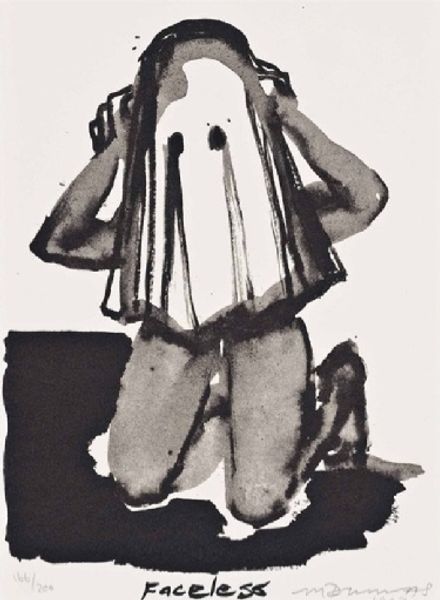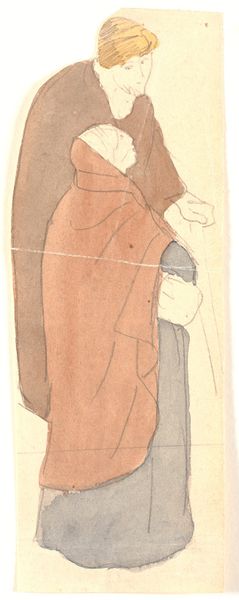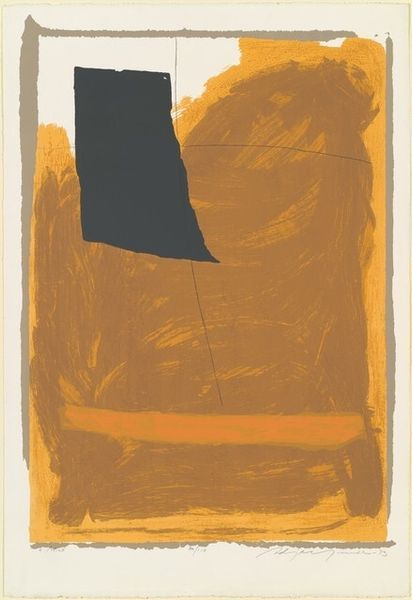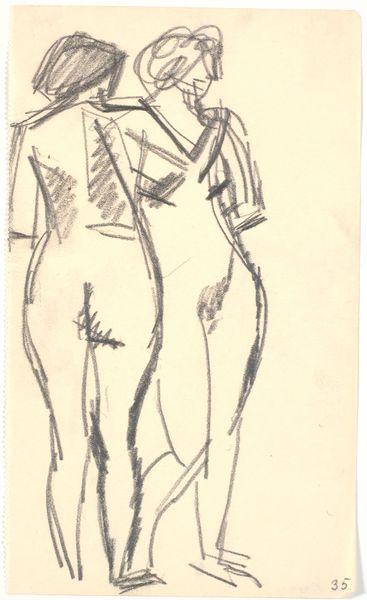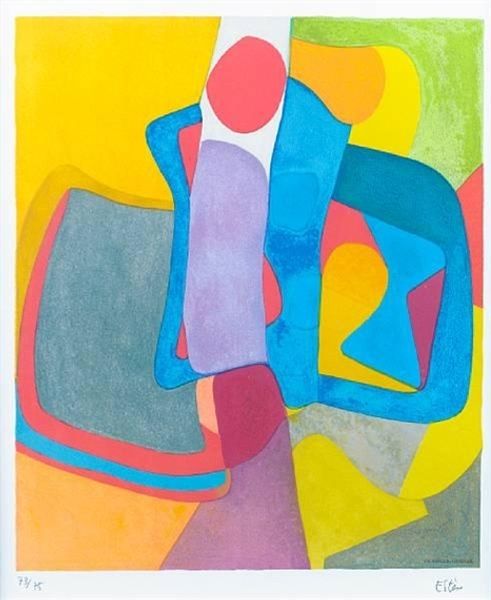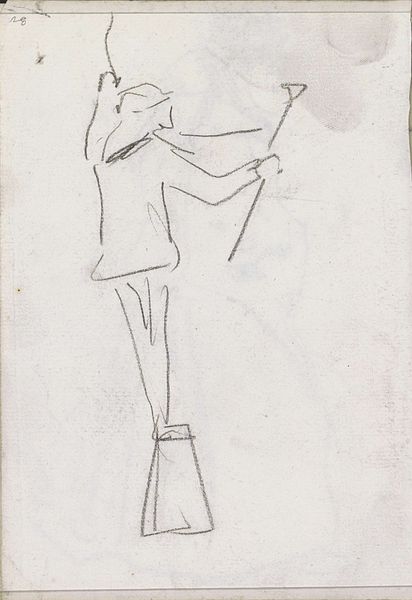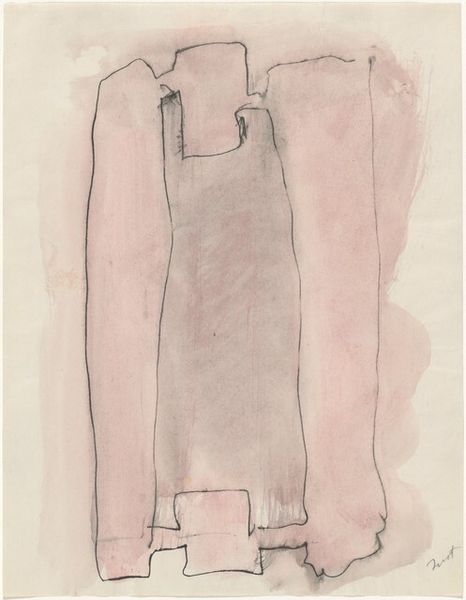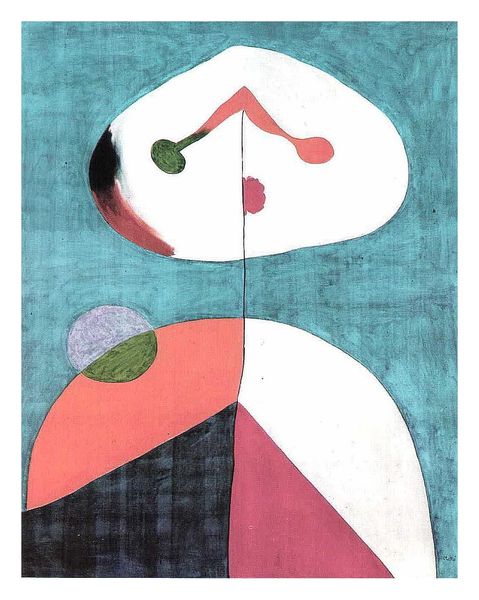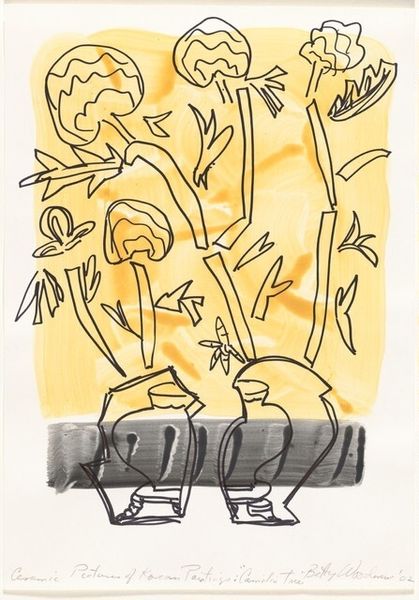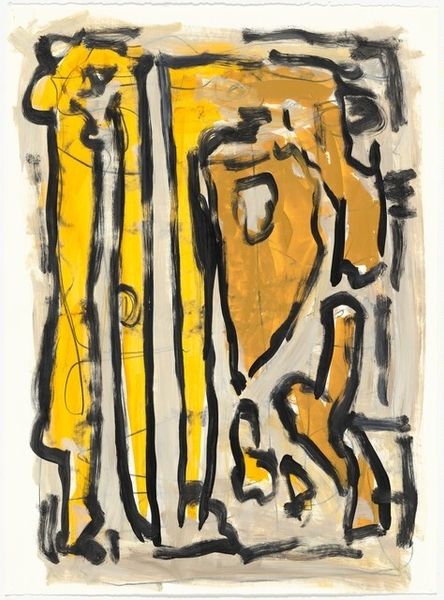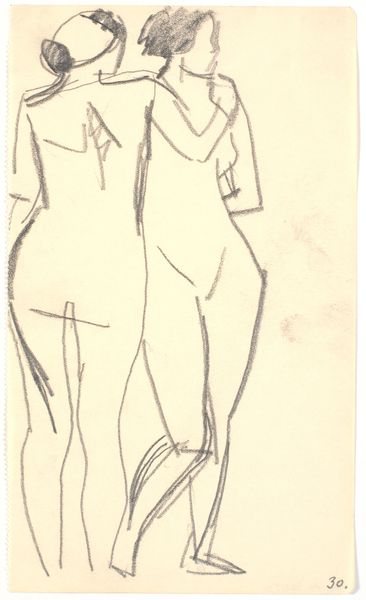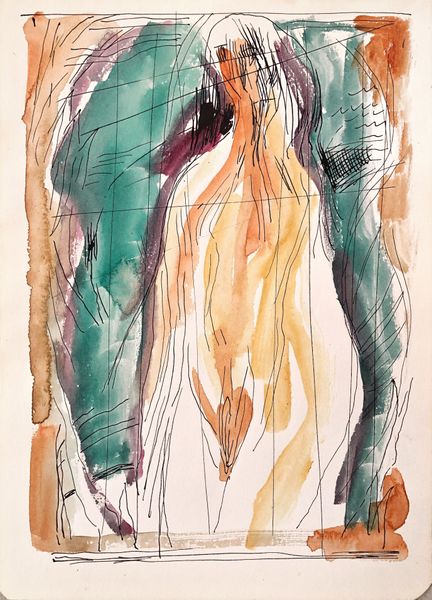
graphic-art, painting
#
portrait
#
graphic-art
#
cubism
#
painting
#
geometric
#
abstraction
#
line
#
modernism
Copyright: Public domain
Curator: Ah, Kazimir Malevich's "Sneaky" from 1913, a captivating early example of his move toward abstraction. He’s working here in a style that shows strong Cubist and Futurist influence. Editor: It looks like a robot trying to be a person! That stiff, geometric body is so unnatural and strangely appealing. And is that truly the work's title? It somehow fits this dissimulating and peculiar person. Curator: The title is curious, isn't it? Malevich was playing with language and form. You can sense his rebellion against traditional portraiture and painting—his dismissal of all traditional aesthetic values, in favor of an abstraction of shape. The stark use of color as well as the line work contributes to that sense of alienation, too, doesn't it? Editor: Absolutely! It seems to question what the artist’s labor means. The piece is simple in execution. Were these lines originally sketched or printed, maybe part of the artist to produce multiple prints quickly? Is he critiquing industrial methods that dismiss unique craft? The contrast between the vivid orange block of the torso and those linear arms suggests an awkwardness, perhaps commenting on the mass-produced body itself. Curator: It's funny how those interpretations, and yours as well, keep arriving in the space this piece makes between, like a sly game that art likes to play with us, and itself. Those hints of a recognizable human figure – the hat, the gesture of the hand, the slight bending of the knee – constantly pull you back in. They ask you to engage, but on whose terms? Editor: A power struggle emerges with that very question. Maybe it reflects on the individual swallowed by machinery? It reminds us that these shapes are not inevitable but the result of real, conscious labor, with material implications we need to consider, instead of blindly embracing aestheticism. Curator: "Swallowed by machinery" – that's good. He also paints with a distinctive personal stamp, in which those shapes almost appear clumsy as they create the impression that he, or it, is "Sneaky", but in whose estimation, and by what parameters? Editor: In essence, "Sneaky" confronts us with the uneasy merger of human identity and the cold reality of material processes, inviting us to reflect upon the hands, both figurative and literal, that shaped this aesthetic form. Curator: And who knows, maybe that little rectangle just wants to steal our hearts?
Comments
No comments
Be the first to comment and join the conversation on the ultimate creative platform.
